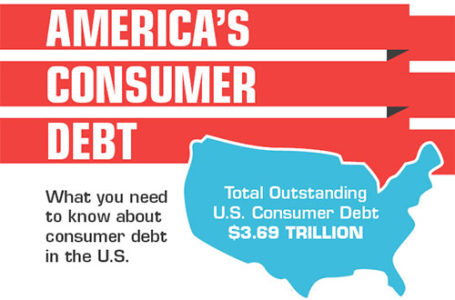Consolidation works a little differently when it comes to student loans.
You might think that student loans could be consolidated with credit card debt. They’re unsecured, after all. However, student loans must be treated uniquely, and they have some special considerations. And in some cases, solutions like debt consolidation don’t work like they do for other kinds of debt.
Private student loan debt consolidation
Consolidating your student loans through a private lender accomplishes most of the goals you usually see from debt consolidation:
- Lower APR
- Total interest savings
- Faster loan repayment
In some cases, private consolidation may also lower your monthly payments. But they usually won’t be as low as what you can qualify for in a federal hardship-based repayment plan. And if you use private consolidation for federal student loans, they get converted to private. You’ll no longer be eligible for any federal student loan relief.
So, if you’re struggling to pay off federal student loans, you need to consider your options carefully. But if most of your loans are private or you’re not struggling and you just want to get out of debt fast, this can be a good option.
How private consolidation works
- First, you should shop around for quotes; online comparison tools can help.
- Find a lender that offers the rates and terms that are best for you.
- Apply for the loan and authorize a credit check.
- The lender will approve you based on your credit score.
- Qualification is still based on your score, although it’s usually easier to qualify with less than perfect credit than with other types of debt.
- However, a high credit score means you’ll qualify for a better interest rate, so you save money on interest charges.
- Choose a term that offers monthly payments you can afford.
- A short term saves money on interest charges, but means higher payments.
- A long term lowers your monthly payments, but means higher total costs.
- Once you get approved, the funds from the new consolidation loan pay off your existing loans.
This leaves you one loan to repay instead of multiple bills to juggle. You should always aim for the shortest term you can comfortably afford to pay. This will get you out of debt with the least amount of time and money spent.
Smart credit tip for student loan consolidation
Reviewing, repairing and rebuilding your credit before getting a private student debt consolidation loan can get you the lowest APR possible. In addition, if you have credit card debt, repaying it to drop your credit utilization ratio and build positive credit history can help you get a credit boost.
But taking steps to ensure your credit score is as high as possible before you consolidate can help you get lower APR, lower payments and save money on total interest charges. Using a credit monitoring tool can ensure you maximize your score before you consolidate your student loans.
Should you convert federal loans to private?
Once you convert federal student loan debt to private, there’s no going back. There are two major concerns that you should consider before you consolidate federal student loan debt this way:
- Do you want to qualify for Public Service Loan Forgiveness?
- How confident are you that you can maintain financial stability during repayment?
Student loan forgiveness can help you get out of debt for significantly less money, without any penalties. Studies show in the right circumstances, borrows can get out of debt for less than they borrowed. But 99% of all applications have been rejected so far. And it takes 10 years just to qualify.
The benefits are immense with PSLF – with the possibility of even more cost savings that consolidation. But it’s not easy and it takes a lot of time. If you’re looking to get out of debt as quickly as possible, PSLF is not for you. Still if once you decide to consolidate, you lose all eligibility for this option.
The other consideration is how stable and secure you feel in your job and with your income. It’s often easier to qualify for deferment and forbearance with federal student loans. They also offer income-based repayment, which means your payments are set based on your income and family size. If you’re struggling (or think you might struggle in the future), it may not be a good idea to convert your debt.
Federal student loan consolidation
There is a way to consolidate federal student loans with other federal student loans. It’s called a Federal Direct Consolidation Loan. But it doesn’t work like a debt consolidation loan usually works. There are three key differences:
- It won’t lower your interest rates, overall; it takes a weighted average of your existing rates to determine the rate on your new loan.
- It’s not going to help you pay off your loans faster; the term is always set at 10 years.
- The main goal is to make sure more of your federal loans are eligible for repayment plans and student loan forgiveness.
These are the types of loans you can consolidate:
- Direct PLUS loans for graduates
- All Direct Loans (subsidized or unsubsidized)
- All Stafford Loans (subsidized or unsubsidized)
- Perkins Loans
- Supplemental Loans for Students (SLS)
- Federal Nursing Loans
- Health Education Assistance Loans
- Other Federal Direct Consolidation Loans
Using a Federal Direct Consolidation Loan can make more of your federal student loan debt eligible for federal relief. Just don’t expect this to give you any of the benefits that you normally see with consolidation. For that, you need private student loan consolidation.

